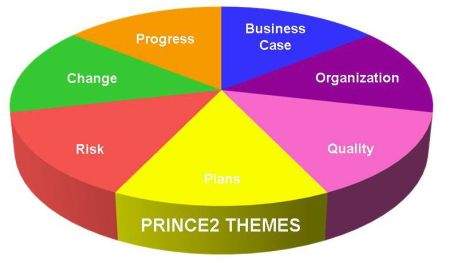In the realm of project management, success isn’t merely a matter of luck. It’s a well-structured approach that incorporates best practices and methodologies. PRINCE2 (PRojects IN Controlled Environments) is one such methodology that has gained worldwide recognition for its effectiveness in managing projects of various sizes and complexities. At the core of PRINCE2 are its 7 principles, which form the foundation for successful project management. In this blog, we’ll explore these principles and understand why they are essential for project success.
1. Continued Business Justification
The first and foremost principle of PRINCE2 is “Continued Business Justification.” It emphasizes the need to ensure that a project remains viable and aligned with the organization’s objectives throughout its lifecycle. This principle prompts project managers to regularly assess whether the project is still worth pursuing. By doing so, organizations can avoid investing resources in projects that no longer serve a valid business purpose.
2. Learn from Experience
“Learn from Experience” is the second principle of PRINCE2. It underscores the importance of capturing lessons learned from previous projects and applying that knowledge to current and future endeavors. By continuously improving based on past experiences, organizations can enhance their project management capabilities, reduce risks, and increase the likelihood of success.
Enroll in a PRINCE2 course today and unlock your path to project management excellence!
3. Define Roles and Responsibilities
Effective teamwork is crucial in project management, and the third principle, “Define Roles and Responsibilities,” helps achieve just that. It entails clearly defining the roles and responsibilities of everyone involved in the project. This clarity ensures that team members know their responsibilities, reducing confusion and promoting accountability.
4. Manage by Stages
“Manage by Stages” is the fourth principle of PRINCE2. It advocates dividing the project into manageable stages, each with specific objectives and deliverables. This approach allows for better control, monitoring, and flexibility. It also provides opportunities to review progress and make informed decisions before moving to the next stage.
5. Manage by Exception
The fifth principle, “Manage by Exception,” empowers project managers to focus on exceptions and delegate routine decisions to team members. This approach ensures that senior management is informed and engaged only when necessary, avoiding unnecessary bureaucracy and facilitating efficient project progress.
6. Focus on Products
“Focus on Products” is the sixth principle of PRINCE2. It emphasizes the importance of defining and delivering project products or outcomes. By clearly defining what the project aims to produce and ensuring alignment with business requirements, this principle helps maintain a project’s focus and ensures that the end results meet stakeholders’ expectations.
7. Tailor to Suit the Project Environment
The seventh and final principle, “Tailor to Suit the Project Environment,” acknowledges that PRINCE2 is not a one-size-fits-all approach. It encourages project managers to adapt and tailor PRINCE2 to suit the specific needs and context of each project. This flexibility ensures that PRINCE2 can be applied effectively in various industries, organizations, and project types.
The Synergy of PRINCE2 Principles
While each of the 7 PRINCE2 principles stands on its own, they work in harmony to create a robust project management framework. Let’s explore how they interact to promote project success:
- Continued Business Justification ensures that projects remain aligned with organizational goals.
- Learning from Experience allows teams to apply past lessons to improve decision-making.
- Defining Roles and Responsibilities fosters effective teamwork and accountability.
- Managing by Stages provides control, flexibility, and review points.
- Managing by Exception reduces bureaucracy and enables timely decision-making.
- Focusing on Products ensures that project outcomes meet stakeholder expectations.
- Tailoring to Suit the Project Environment ensures that PRINCE2 is adaptable to diverse project scenarios.
By following these principles, project managers and organizations can navigate the complexities of project management with confidence and increase their chances of successful project outcomes.
Check out the Project Management Courses here to choose your desired certifications.
The PRINCE2 Manual as Your Guide
The 7 principles of PRINCE2 are more than just theoretical concepts; they are practical guidelines that can be found in the official PRINCE2 manual. This manual is a comprehensive resource that provides detailed insights into the methodology, including practical applications of the principles. It serves as a valuable reference for both aspiring and experienced project managers looking to implement PRINCE2 effectively.
PRINCE2 is more than just a project management methodology; it’s a philosophy that guides project managers and organizations toward success. Its 7 principles serve as the bedrock upon which successful projects are built. By adhering to these principles, project managers can ensure that their projects remain aligned with business objectives, learn from past experiences, define clear roles, manage efficiently, and adapt to varying project environments. Ultimately, PRINCE2 empowers organizations to deliver projects that are not only completed successfully but also provide tangible value to stakeholders.
